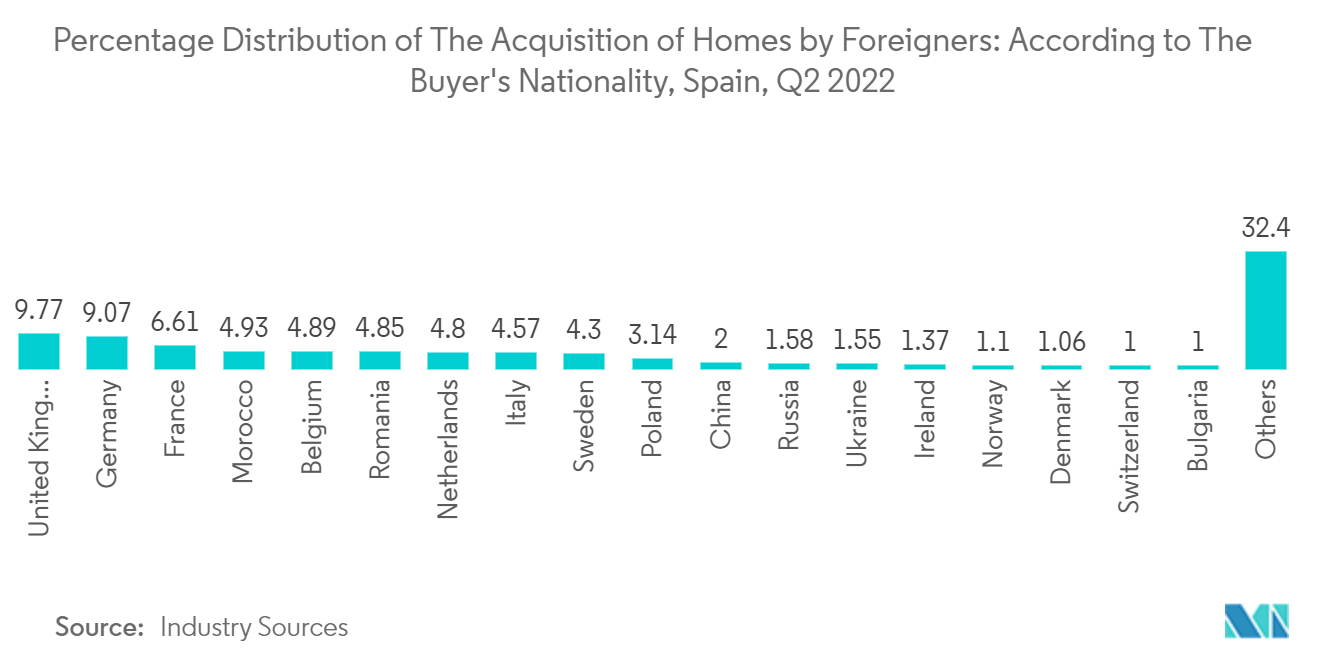Market Trends of Spain Prefab Wood Buildings Industry
This section covers the major market trends shaping the Spain Prefab Wood Buildings Market according to our research experts:
Rising benefits of wood fabrication has driven the market
Spain's prefab industry is anticipated to expand during the projection period as a result of the government's emphasis on the nation's infrastructure. Over the coming years, expanded road and rail infrastructure is anticipated to enable continued growth in the modular and prefab construction sector. Numerous advantages of prefabricating wood include process efficiency, a regulated environment, a higher return on investment, material efficiency, decreased on- and off-site waste, and sustainability.
All of these advantages contribute to meeting the requests for improved buildings made by owners, architects, and tenants. At every level, from design to production to building, process efficiency is a possibility. Planning in great detail enables building procedures to be standardized and optimized, resulting in construction efficiency that adheres to strict deadlines and cuts down on on-site assembly time. Prefabricated parts are sorted and placed onto trucks in order to reduce on-site handling, which improves sequencing. The procedure is also better integrated, which improves communication between the parties and cuts down on expensive change orders.
Because prefabricated components are made in a controlled atmosphere, they are more precise and of higher quality. Additionally, fabrication efficiency is increased, tradespeople's safety is improved, and the construction process is not slowed down by weather. Due to layoffs and other budgetary constraints, Waste in terms of resources and time is minimised. Despite the fact that building components are frequently more expensive up front, on-site construction is typically kept to a minimum, which lowers the overall installation cost.

Increasing Adoption of Wood Housing in Construction Sector
Prefabricated components are produced off-site and often using modelling technologies that offer extremely precise measurements, which leads to material efficiency. Because components are created or cut to precise measurements and have predetermined sizes and dimensions, there is less trash generated both on and off-site, reducing the project's impact on the environment. This refers to the sustainability of prefabrication as well. Buildings' effects on the environment must be quantified throughout their whole existence, from design through facilities management.
Prefab construction gives architects and building industry experts more control over how structures are made, allowing them to choose more environmentally friendly building materials and techniques while also improving their ability to forecast future energy efficiency. Prefabrication is a technique that can be used to improve the sustainability of construction from the viewpoint of a facility's entire lifecycle, particularly considering demolition or reuse, as the case may be. Future entire lifetime sustainability may benefit most from prefabrication's ability to produce structures that adapt to time, change, and reuse/recycle materials.
The popularity of prefabricated homes is rising in the architectural community. Either due to teleworking, which makes it simpler to live outside of the city, or because it is now nearly difficult to rent or own what were formerly typical flats or homes due to the high cost of the property. According to data from various Building platforms, the demand for prefabricated and manufactured homes has increased between 30% and 60% in Spain. As a result, consumers have a wider range of alternatives and choices. Prefabricated homes are becoming more popular, though they haven't yet taken off in Spain as they have in other nations.


